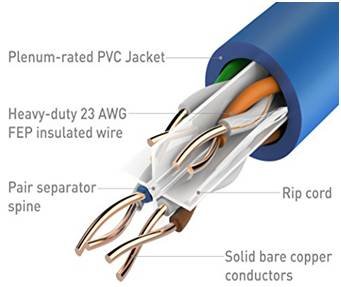Indoor Fiber Optic Cable
Tight-Buffered Cable
Tight-buffered cables are designed for indoor installations. Each individual fiber within the cable is tightly coated with a protective layer. This design offers increased flexibility and ease of termination, making tight-buffered cables suitable for use in premises, data centers, and indoor LAN applications.
Corning Tight-Buffered Fiber Fiber Optics 4 Sale Tight-Buffered FOA Fiber Cable Types

Distribution Cable
Distribution cables are specifically designed for routing within buildings or data centers. They typically have a larger diameter and contain multiple tight-buffered fibers bundled together. Distribution cables are often used for indoor backbone connections, horizontal cabling, and high-density applications.
Breakout Cable
Breakout cables consist of several tight-buffered fibers bundled together within a single jacket. Each fiber within the cable has its own individual buffer, which makes breakout cables suitable for termination at patch panels or equipment. They are commonly used for indoor applications that require flexibility and easy handling.


Low-Smoke Zero-Halogen (LSZH) Cable
LSZH cables are designed with materials that emit limited smoke and no halogen gases when exposed to fire. They are used in indoor environments where fire safety and low toxicity are critical considerations, such as in commercial buildings, data centers, and public spaces.
Plenum Cable
Plenum cables are specifically designed for use in plenum spaces, which are areas above suspended ceilings or below raised floors that facilitate air circulation for heating, ventilation, and air conditioning (HVAC) systems. Plenum cables have a special jacket that meets fire safety regulations and produces minimal smoke and toxic fumes in case of a fire.


Hybrid Cable
Hybrid cables combine fiber optics with other types of cables, such as copper conductors or power cables, in a single jacket. They are used in indoor applications where both data and power transmission are required, such as for security systems, IP cameras, and PoE (Power over Ethernet) applications.
